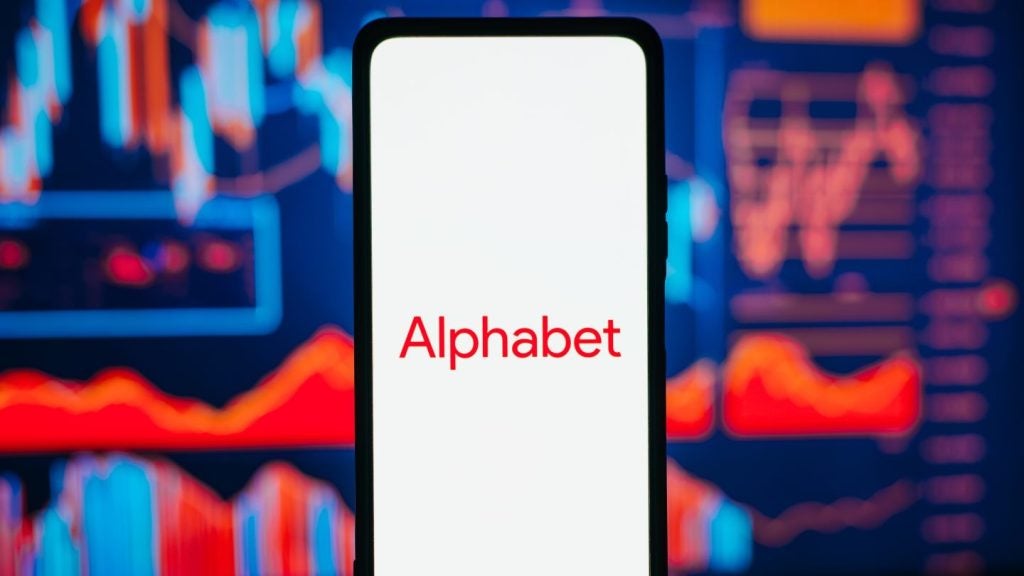While most countries are still struggling allocating 5G spectrum amidst restrictions imposed by the pandemic, China, Japan and South Korea have already launched commercial 5G, and are locked in a technological race to define 5G+ the next generation of telecommunications.
Home to some of the world’s biggest telecom equipment and electronics manufacturers, at stake is the chance to dominate the 5G+ (5G and future generations of mobile technology) value chain estimated to be worth trillions in goods and services, ranging from existing technologies, such as smartphones, to technology that has been promised, such as autonomous cars. According to South Korean policy makers, the market for 5G+ will be worth US$1 trillion by 2026.
In 2009, Swedish MNO Teliasonera awarded a contract to a little-known Chinese company Huawei to build their 4G network, which quickly led to the breakout moment when it secured the contract to replace the entirety of Norway’s infrastructure, reportedly worth €170m over six years, beating out former suppliers Ericsson and Nokia.
With the support of the Chinese government in the form of subsidies and a low-cost labour environment in China, Huawei offered a cheap alternative to other players in the market, vaulting ahead to become, by some measures, the world’s largest telecom equipment manufacturer in 2017. As it grew, it also invested heavily into 5G technologies, and currently holds the most 5G standard essential patents in the world, according to the US-based think tank Wilson Center.
Despite Japan having been the pioneer in 1G and 3G technology and the US having pioneered the very invention of the telephone itself, Japanese manufacturers NEC, Fujitsu and Sony could not compete against Huawei’s cheaper prices while US players such as Lucent and Qualcomm lost the global lead in the 1990s as the GSM standard become globally adopted over the CDMA standard they had developed and bet on. Faced with declining market share, in 2006, Lucent merged with France’s Alcatel and, in 2010 and 2016, Motorola and Alcatel-Lucent were acquired by Nokia, leaving the US with just Cisco Systems as the remaining telecom equipment champion, but not one with a focus on mobile networks, let alone 5G.
Amidst an intense superpower rivalry between Pax Americana and an increasingly assertive communist China that has seen clashes on issues ranging from trade to territorial claims on multiple fronts, the US and its allies are adamant not to let what happened with 5G happen again. An increasingly hostile Beijing, has made US and its allies concerned that Chinese telecom equipment can be infiltrated with security vulnerabilities, such as vendor-installed backdoors and kill switches for espionage and sabotage.
China – Huawei and ZTE are not giving up
The US, beginning under the Trump administration, has called for its allies to exclude Huawei and ZTE from their infrastructure, launching the “Clean Network Initiative”.
However, Huawei is still adamant on doubling down into the next generation of mobile telecommunications. In an interview with CNBC in September 2019, Huawei’s founder and CEO Ren Zhengfei revealed that Huawei had been doing parallel work on 5G and 6G and that the technology is still ten years out. In June 2020, Huawei announced that it had formed a strategic partnership with China Unicom and Galaxy Aerospace to develop an “air-space-ground integration” solution for 6G.
ZTE has also formed a strategic partnership with China Unicom in May 2020 to develop 6G and “promote deep fusion between 6G and satellite networks, IoT and Internet of Vehicles (IoV) and the Industrial Internet”.
In November 2020, China launched a Long March 6 Rocket from the Taiyuan Satellite Launch Center carrying what was dubbed “the world’s first 6G satellite”. The satellite aims to “verify terahertz communication technology in space”.
USA – Is America on the way back?
“I want 5G, and even 6G, technology in the United States as soon as possible. It is far more powerful, faster, and smarter than the current standard. American companies must step up their efforts, or get left behind. There is no reason that we should be lagging behind…”
— Donald J. Trump (@realDonaldTrump) February 21, 2019
On 13 October 2020, the Alliance for Telecommunications Industry Solutions (ATIS) announced the formation of the Next G Alliance, which included major American tech companies Cisco, Qualcomm, AT&T, Facebook, Microsoft and Verizon as founding members. The alliance was created with the objective of “advancing North American technology leadership in 6G and beyond”. Its first meeting was conducted on 16 November 2020 to set direction, strategy and the formation of Steering and Working Groups. Chinese companies are explicitly excluded from joining the organisation.
Japan – Looking Beyond 5G
The pressure that the US has placed on Huawei has given Japan’s NEC an unexpected shot in the arm for its telecom equipment business after having divested its smartphone business in 2013 and struggling to compete against Huawei. In June 2020, Japan’s leading telecom company NTT took a US$600 million (approximately 5%) stake in NEC, with the aim of clawing market share in the telecom equipment market left behind by Huawei’s exclusion. Just six months later, the UK announced that it would be partnering with NEC to roll out a 5G open radio access network, having decided that ‘high risk vendors’ would be removed from the UK’s 5G networks. NEC and NTT aim to outcompete Huawei by promoting an open source network in which the hardware provided will be able to use standardised software from other players.
Japan’s government is taking the lead with the objective of reclaiming its former dominance in the tech industry. In its 2020 edition of Information and Communications White Paper, the Ministry of Internal Affairs and Communications (MIC), outlined its “Beyond 5G” strategy, under which it established a ‘Beyond 5G Promotion Consortium’ forum and promised US$9.6 billion of funds for 6G+ research and development with the objective of securing more than 10% of global 6G+ patents and to launch 6G by 2030.
In the private sector, NTT has taken the extraordinary step of taking its mobile subsidiary Docomo private in September 2020 setting sights on unveiling 6G by 2030, in line with the government’s vision. “(Without acquiring Docomo), we will not be able to compete with GAFA (Google, Amazon, Facebook and Apple) on 6G, which is the fusion of mobile and fixed communications,” NTT’s CEO Jun Sawada said at a briefing on 6 November 2020. NTT has also partnered with Sony and Intel to collaborate on 6G mobile network technology development.
South Korea – The 5G+ first adopter
On 8 April 2019, at around the time that KT launched the world’s first commercial 5G network, the South Korean Ministry of Science and ICT (MSIT) unveiled its 5G+ strategy. Drafted in 2015 by the South Korean Strategic 5G Promotion Committee, a team of members from both private and public sectors, the 5G+ strategy set out 10 core industries and 5 core services to which emphasis will be given to, so as to capture an estimated 15% of the global economic value, worth KRW180 trillion (US$160 billion), from the 5G+ market by 2026. MSIT aims for South Korea to pilot 6G in 2026, and for the technology to be commercially available from 2028 – 2030. To achieve this, they have set aside KRW200 billion (US$169) for five years (2021 to 2026) to create the conditions for 6G development.
Leading Korean network equipment and smartphone manufacturer Samsung, in its white paper “the Next Hyper-Connected Experience for All” outlined the candidate technologies for 6G and gave an estimate of 6G standardisation at 2028 and commercialisation two years after. Samsung has established the Advanced Communications Research Center in May 2019 to work on next generation telecommunications.
Meanwhile, LG Electronics, part of the LG Group that also controls mobile operator LG Uplus, jointly set up a research center with the Korea Research Institute of Standards and Science (KRISS), a government funded laboratory, in January 2019 to develop core technologies for 6G telecommunications, such as tetrahertz technology.
Taiwan – Feeling the heat, but holding to most of the chips
In gearing up for 5G & 6G, no other country views a technological edge as a matter of survival. Beijing, which considers Taiwan as a breakaway province, sees reunification, by force if necessary, as a matter of national pride and revitalisation of the Chinese people.
However, Taiwan has an ace up its sleeves – semiconductors – which became very apparent at the tail end of 2020 when the world suffered a shortage of chips. Taiwan is the biggest player in the semiconductor industry, largely due to semiconductor contract manufacturer TSMC. Its foundries are capable of producing the thinnest and most advanced chips at the most economical level.
For China or any of its neighbours’ 5G+ ambitions to come to fruition, they will have to rely on Taiwan’s chips – a reason for allies to come to Taiwan’s aid and for Beijing to think twice about any invasion plan.
Taiwan is also home to the world’s largest contract electronics manufacturer Foxconn and is also the ninth-largest standard 5G patent holder in the world. Foxconn is working with FarEasTone and its telecom subsidiary Asia Pacific Telecom to develop 6G chips, 6G technology and quantum computing.
Not to be outdone by the launch China’s 6G Satellite, Chunghwa Telecom began research and development on low earth orbit satellite for 6G applications in January this year.
While the US appears to be lagging behind China in the race for 6G pre-eminence, its allies in the Asia-Pacific are clearly ahead of the pack. As President Biden talks about “extreme competition” with China, the US should not forget that it does not have to win this race so long the winner is in the team.








